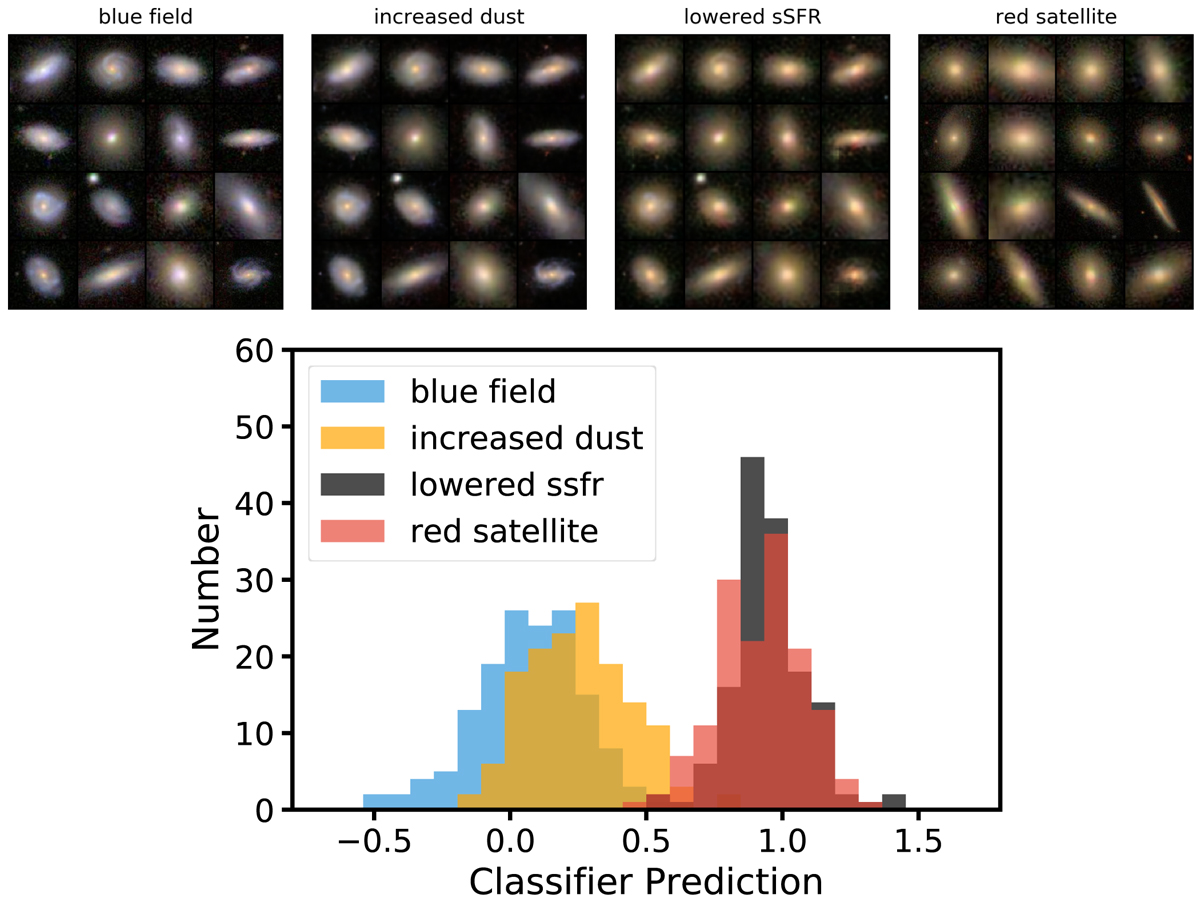Fig. 3.

Top: the original blue field galaxy images (left), and the real red satellites (right). We use the two Fader networks to increase the dust (left centre) and lower the sSFR (right centre). The galaxies with lowered sSFRs are qualitatively closer to the real red satellites. Bottom: same information from the top panel shown quantitatively using a ridge classifier. We show the classifier prediction distributions of the real blue field and red satellite distributions (blue and red, respectively), and the results of the two Fader transforms of the real blue field galaxies. The increased dust population (yellow) is very different from the real red satellites, while the lowered sSFR Fader population (grey) is very close. This suggests that lowering the sSFR is a better explanation for the formation of red satellite galaxies.
Current usage metrics show cumulative count of Article Views (full-text article views including HTML views, PDF and ePub downloads, according to the available data) and Abstracts Views on Vision4Press platform.
Data correspond to usage on the plateform after 2015. The current usage metrics is available 48-96 hours after online publication and is updated daily on week days.
Initial download of the metrics may take a while.


